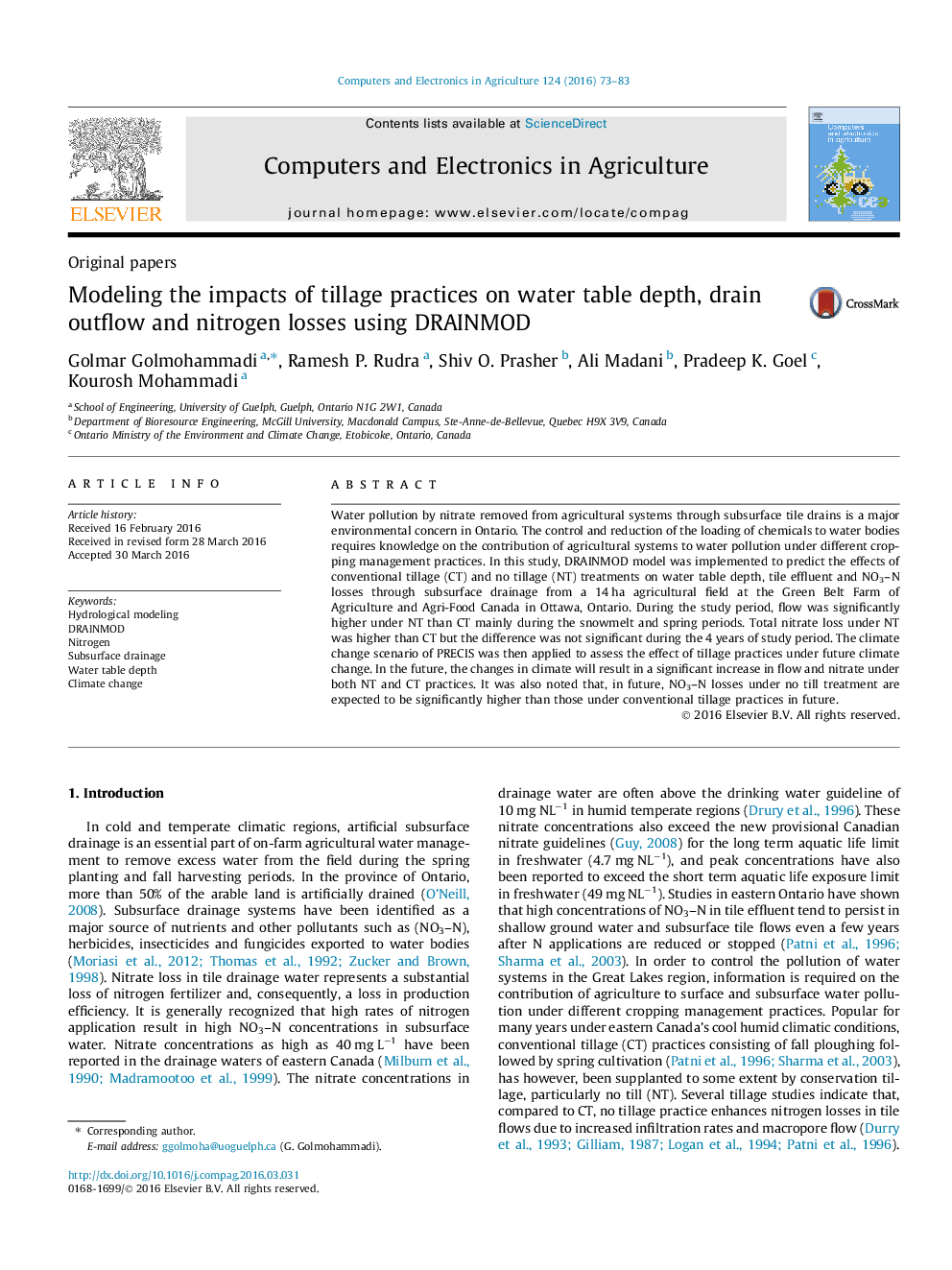| Article ID | Journal | Published Year | Pages | File Type |
|---|---|---|---|---|
| 6540380 | Computers and Electronics in Agriculture | 2016 | 11 Pages |
Abstract
Water pollution by nitrate removed from agricultural systems through subsurface tile drains is a major environmental concern in Ontario. The control and reduction of the loading of chemicals to water bodies requires knowledge on the contribution of agricultural systems to water pollution under different cropping management practices. In this study, DRAINMOD model was implemented to predict the effects of conventional tillage (CT) and no tillage (NT) treatments on water table depth, tile effluent and NO3-N losses through subsurface drainage from a 14Â ha agricultural field at the Green Belt Farm of Agriculture and Agri-Food Canada in Ottawa, Ontario. During the study period, flow was significantly higher under NT than CT mainly during the snowmelt and spring periods. Total nitrate loss under NT was higher than CT but the difference was not significant during the 4Â years of study period. The climate change scenario of PRECIS was then applied to assess the effect of tillage practices under future climate change. In the future, the changes in climate will result in a significant increase in flow and nitrate under both NT and CT practices. It was also noted that, in future, NO3-N losses under no till treatment are expected to be significantly higher than those under conventional tillage practices in future.
Related Topics
Physical Sciences and Engineering
Computer Science
Computer Science Applications
Authors
Golmar Golmohammadi, Ramesh P. Rudra, Shiv O. Prasher, Ali Madani, Pradeep K. Goel, Kourosh Mohammadi,
